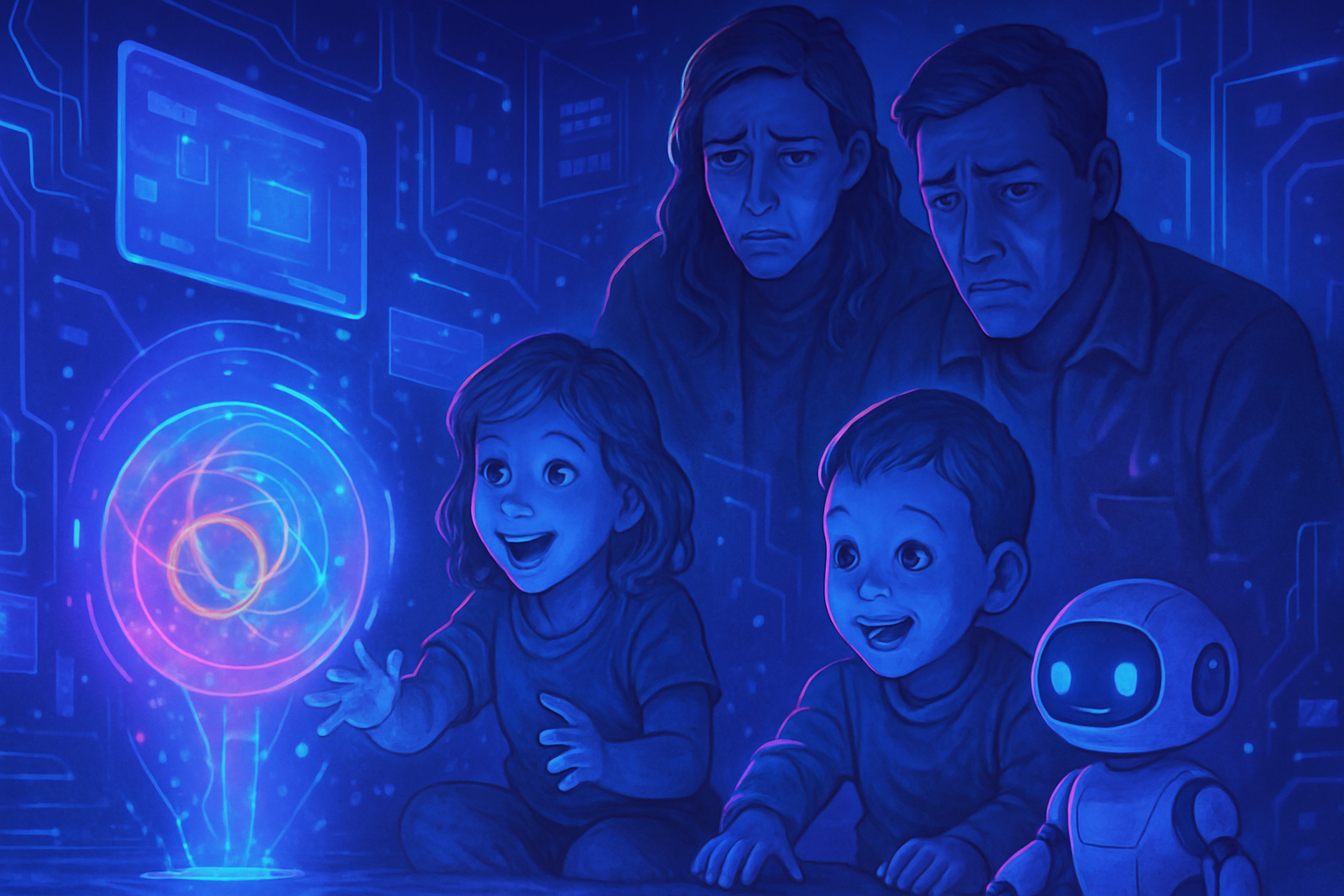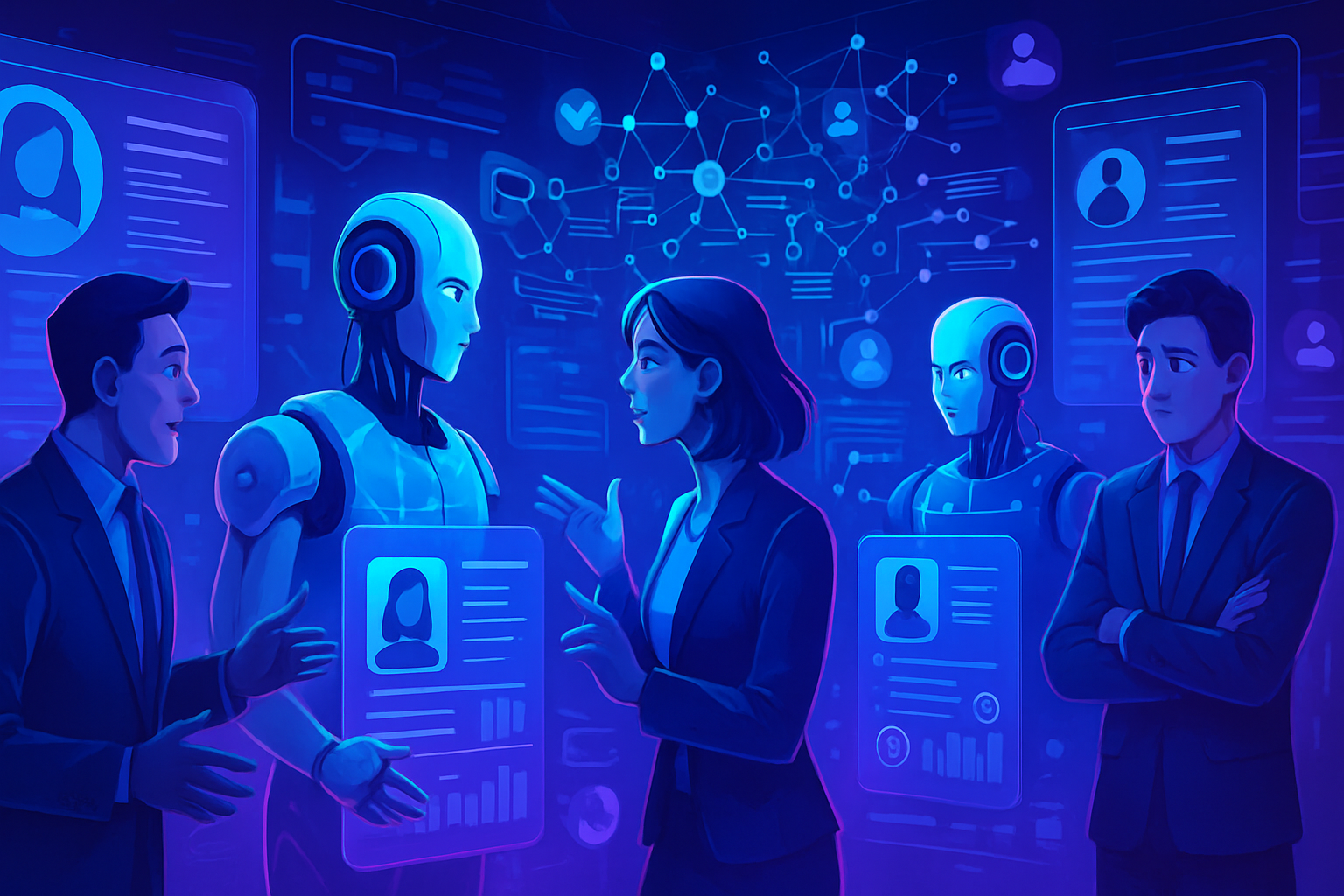The fascination with artificial intelligence among young children raises profound questions. The use of these technologies impacts the development of social and emotional skills in young minds. Innovative parenting strategies are emerging, transforming digital devices into genuine playful and educational practices. This evolution brings undeniable benefits but also raises concerns about dependence and the anthropomorphism of technological tools. The duality between wonder and risks becomes pervasive. Children, exposed to emotional exchange simulators, enter into a complex relationship with non-human entities.
Parents, faced with the rise of artificial intelligence, choose to integrate these technologies into their children’s daily activities. This practice brings reflections on the potential effects on the development of the youngest. Concerns grow as these tools become ubiquitous, raising ethical and psychological questions.
An Intriguing Experience
Josh, a father of a four-year-old, shares his experience after allowing his son to interact with ChatGPT. The latter captivated his son for over two hours, generating a rich dialogue that Josh did not expect. His reflections illustrate the feelings of wonder and fear regarding the enthusiasm sparked by AI.
The Benefits Perceived by Parents
For some, AI represents an opportunity for playful education and enrichment. Saral Kaushik, a software engineer, faces the challenge of parenting by using ChatGPT to stimulate his child’s imagination. He encouraged his son to ask questions to an “astronaut,” transforming a simple call into an immersive discussion. The enthusiasm of children in these exchanges highlights the educational potential of these technologies.
The Risks Associated with Child-AI Interaction
Experts question the psychological consequences of AI use by the young. Recent warnings about the risks of addiction and emotional attachment of children to artificial intelligences should be taken seriously. Recent tragedies related to interactions with AI highlight devastating impacts on the mental health of adolescents.
The Specificities of Cognitive Development in Young Children
Research on children’s interactions with AI is just beginning, but early findings suggest significant differences compared to human interactions. Ying Xu, a professor at Harvard University, emphasizes that children aged three to six may perceive AI as a living entity. This cognitive distinction is essential for understanding how children build relationships with technology.
The Long-Term Implications
Parental approaches vary significantly, with some opting for a strict separation between digital games and real interactions. The fear of inappropriate exposure to unwanted content remains pervasive. Studies highlight the need for safeguards to prevent the unexpected consequences of using AI among young children.
A Necessary Ethical Reflection
Voices are emerging, calling for an ethical debate on children’s engagement with these complex technologies. Andrew McStay, a professor specializing in technology and society, criticizes existing structures that do not consider the best interest of children. The fear of emotional dependence and lack of empathy in children uses artificial representations of human relationships.
Technological Creations for Children
Companies are competing in innovation to design toys and applications that integrate AI. Curio, for example, offers “smart” stuffed companions intended to learn and interact with children. However, these products raise questions about their educational value. Opinions vary, with some parents highlighting a sterility of interactions created by these toys, which do not replace human imagination.
The Challenges of the Modern Digital World
The current technological landscape raises pressing questions about parental responsibility. Managing the use of AI and screens becomes crucial. Parents must navigate an environment where social, emotional, and cognitive stakes intertwine, requiring heightened vigilance regarding the tools available to their children.
Studies continue to explore the nuances of interactions between children and AI, examining the benefits and potential dangers that this new digital era presents. Parents must therefore assess these challenges proactively to ensure a balanced development for their children.
Frequently Asked Questions
What are the advantages of allowing young children to interact with AI?
Young children can benefit from interaction with AI in terms of developing creativity, stimulating their imagination, and engaging in captivating learning through personalized stories tailored to their interests.
Are there risks associated with children’s use of AI?
Yes, risks include the possibility that children develop unrealistic expectations regarding relationships, confusion between reality and fiction, as well as concerns regarding the impact of technology on their socio-emotional development.
How can parents ensure that the use of AI is safe for their children?
Parents should supervise the use of AI, set time limits, engage with their children during sessions, and ensure that the AI used is designed to be safe and appropriate for young users.
Can AI adequately replace human interaction in children’s development?
No, AI cannot replace the human interaction that is essential for children’s social and emotional development. However, it can be a complement to enriching activities when used in moderation.
What precautions should parents take before introducing AI to their children?
Parents should assess the quality of the AI, check reviews and recommendations, understand how the software works, and discuss with their children the differences between interacting with AI and interacting with humans.
Can children become addicted to AI?
Yes, it is possible for children to develop a dependency on AI, especially if they perceive it as a captivating interlocutor. Parents should monitor usage and encourage varied interactions with people and non-technological activities.
What is the impact of AI on children’s imagination?
If used properly, AI can stimulate children’s imagination by providing them with creative and personalized narratives. However, it is important to ensure that this does not replace traditional creative play and hands-on activities that reinforce their imagination.






